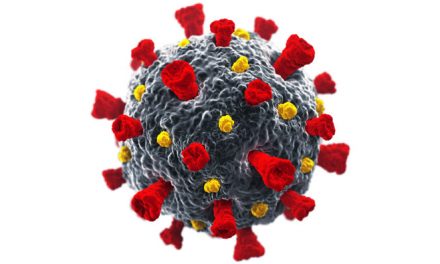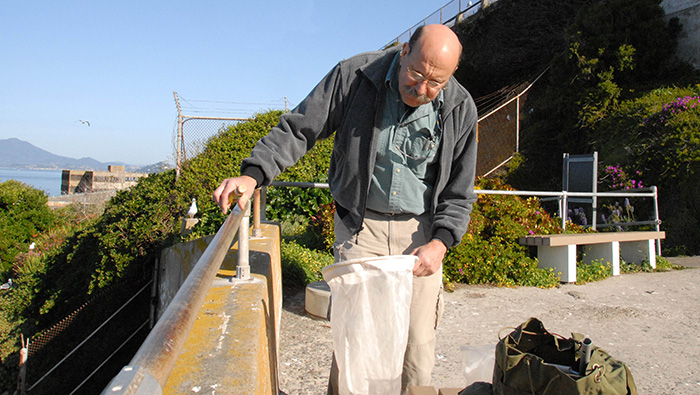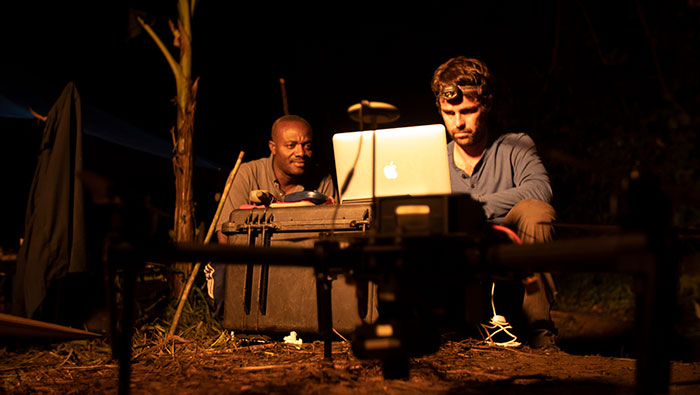
UC Davis anthropologist Damien Caillaud, right, and Congolese colleague Urbain Ngobobo study infrared camera footage taken by drone as they search for a remote group of Grauer’s gorillas during the filming of Endangered. (Courtesy of Discovery Plus)
UC Davis Gorilla Expert in New Documentary
A new documentary, Endangered, produced by Discovery and the BBC Natural History Unit, features UC Davis anthropologist Damien Caillaud’s work to study and protect Grauer’s gorillas in the Democratic Republic of the Congo.
Narrated and executive produced by Ellen DeGeneres, Endangered focuses on seven conservation stories around the globe — Caillaud and colleagues with Grauer’s gorillas, along with other wildlife conservationists fighting to save clouded leopards, Indonesian songbirds, sharks, frogs, lemurs and giraffes. Endangered launched on Discovery Plus on Earth Day, April 22.
Caillaud, an associate professor in the Department of Anthropology in the UC Davis College of Letters and Science, began studying gorillas in 2003. Since then, he has measured and analyzed social behavior and movement patterns of three of the four gorilla subspecies — Western lowland, mountain and Grauer’s — in four African countries.
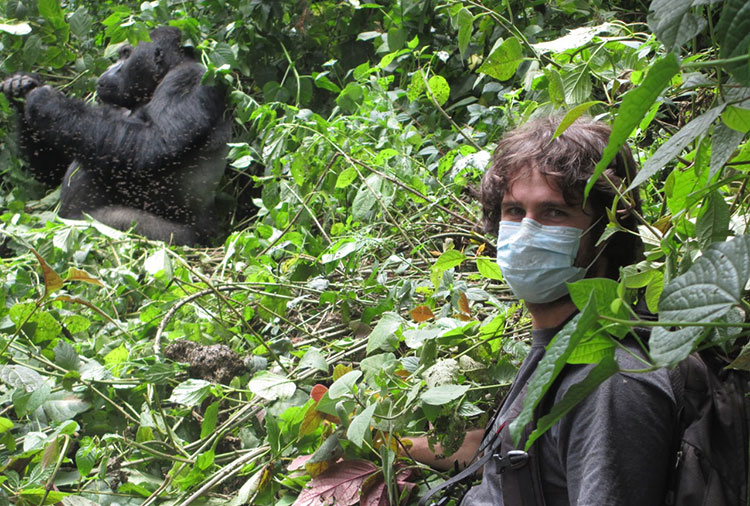
Caillaud observes a gorilla in the wild. (Courtesy of Damien Caillaud)
For the documentary, a crew from the BBC Studios Natural History Unit spent a few weeks with a research and conservation project that Caillaud and Congolese colleague Urbain Ngobobo initiated with the Dian Fossey Gorilla Fund in 2012. The crew recorded a long-studied group accustomed to humans in the Kahuzi-Biega National Park. They also followed Caillaud and Ngobobo as they used a drone and hiked through a remote forest to track a group that may have never seen people before. In addition, they filmed villagers whose management of a community reserve has improved their own lives and increased the Grauer’s gorilla population.
Saving gorillas from extinction
Also known as the eastern lowland gorilla, Grauer’s gorillas are the largest of the four gorilla subspecies. Most Grauer’s gorillas live outside national parks in Congo. Scientists estimate that their population has declined by 80% over the past 25 years, primarily as a result of poaching. Only about 3,800 gorillas remain.
The critically endangered gorillas only survive in a region where human and wildlife populations have been racked by a quarter century of violence, Caillaud said.
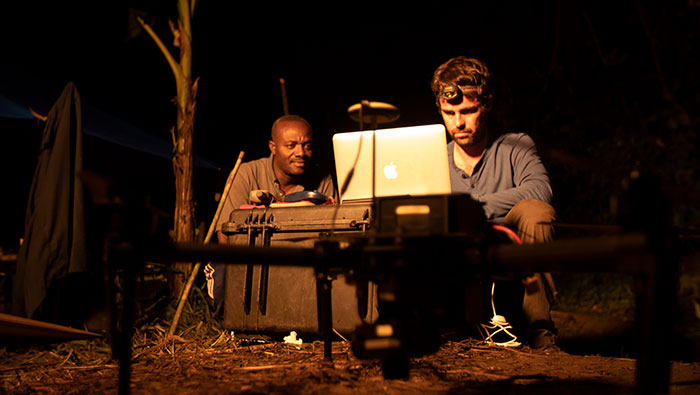
Ngobo, left, and Caillaud operate a drone fitted with an infrared camera during the documentary filming. (Courtesy of Discovery Plus)
“Without permanent research and conservation efforts, Grauer’s gorillas may go extinct within a few decades,” he said. “So, we worked with the Dian Fossey Gorilla Fund to create a research station in a small village, Nkuba, located in the center of the range of Grauer’s gorillas. We worked in close collaboration with the local community to design long-term research and conservation activities in an area covering 1,200 square kilometers [close to 750 square miles] of forest.
“It was a success,” he said. “Gorillas are now well protected by teams of local villagers whom we trained, and many other species are also benefitting from these protection efforts.”
A positive light on Eastern Congo
Caillaud said he has turned down other film companies’ requests to document his gorilla research, but accepted this one because he regards BBC as “the gold standard for documentaries” and the producers wanted to also highlight the critical participation of local people.
While filming occurred in 2018, production and release of Endangered was delayed by the pandemic.
Caillaud said he hopes the documentary “sheds some positive light on this region, the Eastern Congo, where nobody wants to go and everyone wants to ignore.” Local people are ready for civil unrest to end and tourism to start, he said, for the benefit of both people and gorillas.


